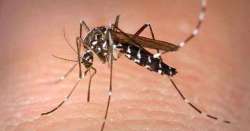World Mosquito Day 2021: Everything you need to know about mosquito-borne diseases and its impacts
There are several different mosquitoes that act as vectors for different diseases. Aedes mosquitoes cause chikungunya, dengue fever, lymphatic filariasis, rift valley fever, yellow fever, and zika.

Although very small in size, mosquitoes are perhaps the only predator that has thrived through the centuries, causing death through vector-borne diseases. In fact, it is counted among the world's deadliest, killing more than seven lakh people each year. There are several different mosquitoes that act as vectors for different diseases. Aedes mosquitoes cause chikungunya, dengue fever, lymphatic filariasis, rift valley fever, yellow fever, and zika. Anopheles cause malaria, lymphatic filariasis. Culex can lead to Japanese encephalitis, lymphatic filariasis, West Nile fever.
Malaria
Female Anopheles is the main vector of malaria. It breeds in rainwater pools and puddles, borrow pits, river bed pools, irrigation channels, seepages, rice fields, wells, pond margins, sluggish streams with sandy margins. This mosquito mostly bites between dusk and dawn.
Increasing human activities such as Urbanisation, industrialization and construction projects with consequent migration, indiscriminate disposal of goods create conditions favourable for mosquitoes and contribute to the spread of diseases. Specific population risk groups include young children, non-immune pregnant women, people with immune-compromised conditions and travellers from endemic areas.
Two types P vivax and P falciparum malaria present with high-grade fever with chills and headache and vomiting. Early diagnosis and treatment are necessary, else it may lead to complications and death especially in high-risk groups. It can be diagnosed through a blood test and can be treated with appropriate anti-malarial drugs and good hydration
Dengue
This is caused by the dengue virus. One may exhibit symptoms after three to 14 days after infection. This may include high fever, headache, joint pain, vomiting, muscle, and even skin rash. The recovery period may take two to seven days. Dengue fever can develop into dengue hemorrhagic fever as well, a more severe form of the disease, which includes symptoms such as bleeding under the skin and even constant vomiting. Dengue can be treated by drinking plenty of fluids, staying hydrated and avoiding dehydration. In case the fever doesn't go, then the patient will have to be admitted to the hospital and seek treatment.
Chikungunya
This is a viral disease transmitted to humans from infected mosquitoes. Symptoms may include fever, fatigue, joint pain, headache, muscle pain, joint swelling, and rash. In most cases, a patient's condition will improve within a week. However, occasionally that nagging joint pain may last for months or even years. Chikungunya has some similar signs with Zika and dengue, leading to misdiagnosis of it as the symptoms tend to overlap. Hence, a thorough diagnosis is needed for the same. Do not ignore the symptoms. Instead, seek immediate medical attention. The treatment includes drinking a lot of fluids, staying hydrated by drinking enough water, taking medications only recommended by the doctor, and following a well-balanced diet.
Zika virus spreads mostly by the bite of an infected Aedes species mosquito, which bites during the day. The virus can be passed from a pregnant woman to her fetus and can cause infants to be born with microcephaly and other congenital malformations.
It is also associated with other complications of pregnancy including pre-term birth and miscarriage, individuals infected with the Zika virus can also transmit the disease to their sex partners. Most of them do not develop symptoms or are very mild. No specific treatment or vaccine is available as mostly it is self-limiting.
Other diseases include Japanese encephalitis which is rare and can cause paralysis and seizures. It is transmitted by the Culex mosquito and Filariasis, which is caused by Microfilaria, is also transmitted by the Culex mosquito Mainly prevalent in coastal areas due to hot and humid conditions. Majority remains asymptomatic, symptoms include fever, swelling and pain in limbs.
Prevention
Don't allow water to remain stagnant in and around your house. Clean the blocked drains. Empty - room air coolers and flower vases completely at least once in seven days and then refill them. The tray below the fridge is also to be cleaned. Keep the water tanks and water containers tightly covered so that the mosquitoes cannot enter them and start breeding. Spraying of DDT, Malathion and Pyrethrum etc. over all the walls of the house. Use insecticidal sprays in all areas within the house at least once a week.
